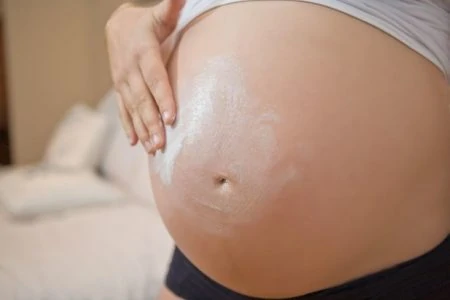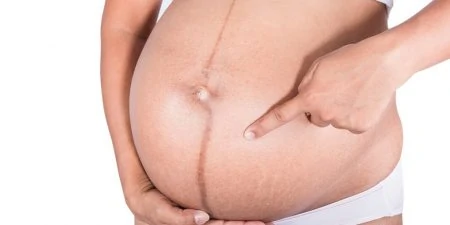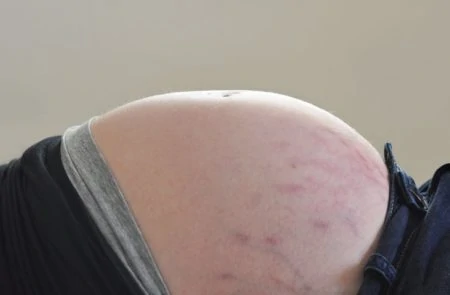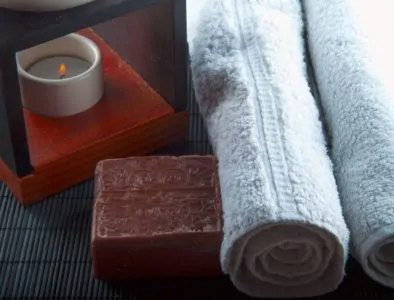When that positive test appears, we immediately start dreaming of the cute baby bump and that famous “pregnancy glow.” But for many of us, reality hits a little differently. Instead of flawlessness, we might be navigating pregnancy acne, varicose veins, and swollen ankles.
One area that often catches moms-to-be by surprise is their hair. From sudden thickness to unexpected grease, pregnancy hormones take your follicles on a wild ride.
We are diving into exactly why these changes happen, what you can expect, and which treatments are safe for you and your baby.
Key Takeaways
- Pregnancy hormones prolong the hair growth phase, leading to thicker locks and less shedding until postpartum.
- Common side effects include texture changes, dryness, dandruff, oily roots, and unwanted body hair growth.
- Most hair dyes and perms are considered safe, but experts recommend avoiding keratin treatments and Brazilian blowouts.
- Stay hydrated and eat a nutrient-rich diet to manage scalp health and support hair growth during pregnancy.
Hair Changes During Pregnancy
Your body is working overtime to grow a human, and your hair is along for the journey. You might love the volume, or you might find the texture changes frustrating. Here is a breakdown of what happens to your hair when you are expecting.
1. Thicker, Fuller Locks
Around the second trimester, many women notice they are suddenly sporting longer, thicker hair.
It might feel like magic, but your hair strands are not actually getting thicker. Instead, your body just stops losing them.
In a normal cycle, about 85% to 95% of your hair is growing, while the rest rests and eventually sheds. We typically lose about 100 strands a day.
During pregnancy, surging estrogen levels interrupt this cycle. The hormones keep hair in the “growth” phase and delay the “shedding” phase. The result is a head of hair that feels significantly fuller because you aren’t losing the daily strands you usually would (1).
The Downside
2. Hair Loss
While most women enjoy extra volume, hair loss can occur during pregnancy, though it is rare.
If you are losing hair while pregnant, it is likely not a hormonal side effect. Instead, it usually points to a vitamin or mineral deficiency. Your baby takes what it needs first, which can leave you depleted. This typically reverses once you adjust your diet or supplements.
True “pregnancy hair loss” is actually postpartum hair loss. This happens three to four months after delivery when your hormones drop, triggering all that “extra” hair to fall out. It can be startling, but it is normal and temporary.
3. Dry, Itchy Scalp
A dry scalp is a pesky symptom that often pops up in the third trimester, though some moms deal with it for the full nine months.
Several factors contribute to this itchiness:
- Dietary changes: If nausea or cravings have wrecked your diet, you might lack the nutrients needed for healthy skin oils.
- Stress: High stress induces inflammation in the skin, including the scalp (2).
- Dehydration: Your blood volume increases during pregnancy, meaning you need more water. If you are dehydrated, your skin and scalp will dry out.
How to Treat a Dry Scalp
If you are dealing with dryness, switch to a moisturizing shampoo or one containing selenium or zinc pyrithione.
You can also improve your skin health from the inside out by eating nutrient-dense foods:
- Fresh fruits and vegetables.
- Fatty fish.
- Nuts and seeds.
Ensure you are drinking about 10 cups of water daily. Hydration helps everything from your scalp to your digestion.
4. Dandruff
Even if you have never had dandruff before, pregnancy can trigger it. This is usually caused by an overreaction of the immune system or changing oil levels.
During pregnancy, your body is hyper-alert to protect the baby. It may view natural scalp yeast as a threat, causing skin cells to shed rapidly as a defense mechanism. This results in flakes.
Treating Dandruff During Pregnancy
Look for a pregnancy-safe shampoo. These active ingredients are generally considered safe:
- Ketoconazole: An antifungal agent.
- Pyrithione zinc: Fights bacteria and fungus.
- Selenium sulfide: Slows down cell death and shedding.
If you prefer natural remedies, try these options:
- Apple cider vinegar: Apply overnight to clean the scalp of fungus.
- Aloe vera: Massage pure aloe into the scalp to soothe itching.
- Coconut oil: Warm the oil, apply it to the scalp, and rinse after an hour to moisturize.
5. Oily Hair
For some women, the “glow” is just grease. The same hormonal surge that causes acne can send your scalp’s oil production into overdrive.
Your genetics play a huge role here. If you had oily skin during puberty, you are more likely to experience oily hair during pregnancy.
Here is how to manage the slickness:
- Skip the conditioner: If you must use it, apply a tiny amount only to the very ends of your hair.
- Wash less, not more: It sounds counterintuitive, but over-washing strips natural oils, causing your scalp to produce even more oil to compensate. Stick to washing 2 or 3 times a week.
6. Unwanted Body Hair
We can’t talk about pregnancy hair without mentioning the hair growing in places you don’t want it.
A rapid increase in androgens can cause hirsutism (excess hair growth). You might find hair sprouting on your chin, upper lip, jawline, nipples, or belly.
Don’t panic; you aren’t turning into a werewolf permanently. This usually fades within six months of giving birth. In the meantime, it is safe to tweeze, wax, or shave these stray hairs.
Hair Treatments During Pregnancy
We all want to feel like ourselves when our bodies are changing so much. A fresh cut or color can do wonders for your confidence. Generally, experts agree that most treatments are safe, but there are a few nuances to know.
1. Coloring Hair
The consensus among medical professionals is that it is safe to dye your hair while pregnant.
The chemicals in semi-permanent and permanent dyes are not highly toxic, and your scalp absorbs very little of them. The amount that could potentially reach your baby is negligible.
However, many doctors recommend waiting until the second trimester just to be safe, as the first trimester is a critical period for development (3).
Safety First
If you want to avoid chemicals, consider pure henna (ensure it has no metal salts) or vegetable-based dyes.
2. Perms
The classic perm is considered safe during pregnancy. Like dye, the skin absorption is minimal (4).
The bigger risk is the result. Pregnancy hormones can alter your hair’s texture and how it reacts to chemicals. Your hair might not take the curl, or it could turn out frizzy. If you decide to get a perm, ask your stylist to do a test strand first.
3. Straightening Treatments
If you are battling pregnancy frizz, you might be eyeing chemical straighteners. However, not all smoothing treatments are created equal.
Relaxers
Chemical relaxers (creams used to permanently straighten hair) are generally viewed as safe in moderation. As with dyes, ensure the salon is ventilated so you aren’t breathing in strong fumes.
Keratin and Brazilian Blowouts
You should avoid Brazilian blowouts and most keratin treatments while pregnant (5).
These treatments often contain formaldehyde (or release it when heated), a known carcinogen. The process takes a long time, increasing your exposure to dangerous fumes.
A 2013 study found a link between hair straightening cosmetics use during pregnancy and the development of childhood cancers like leukemia in children under 2 years old (6).
Editor's Note:
Caitlin Goodwin, MSN, RN, CNMIt is best to embrace your natural texture or use heat styling tools at home until after your baby arrives.
FAQs
Embrace the Changes
Pregnancy transforms your body in ways you might not expect, and your hair is no exception. Whether you are enjoying the best hair of your life or battling grease and flakes, remember that it is all temporary.
If you want to maintain your beauty routine, you generally can. Just skip the formaldehyde treatments and keep your space ventilated. Be gentle with yourself, your body is doing hard work, and a bad hair day is a small price to pay for the little one on the way.










